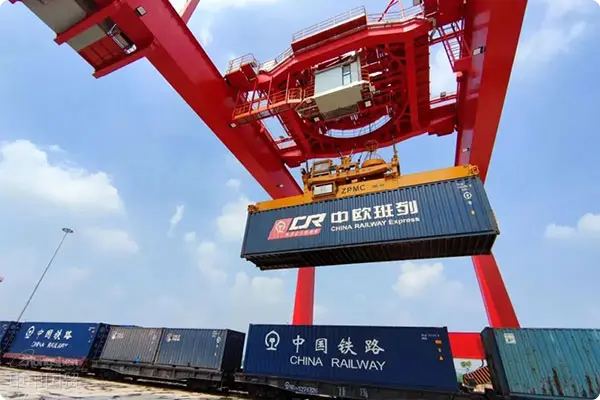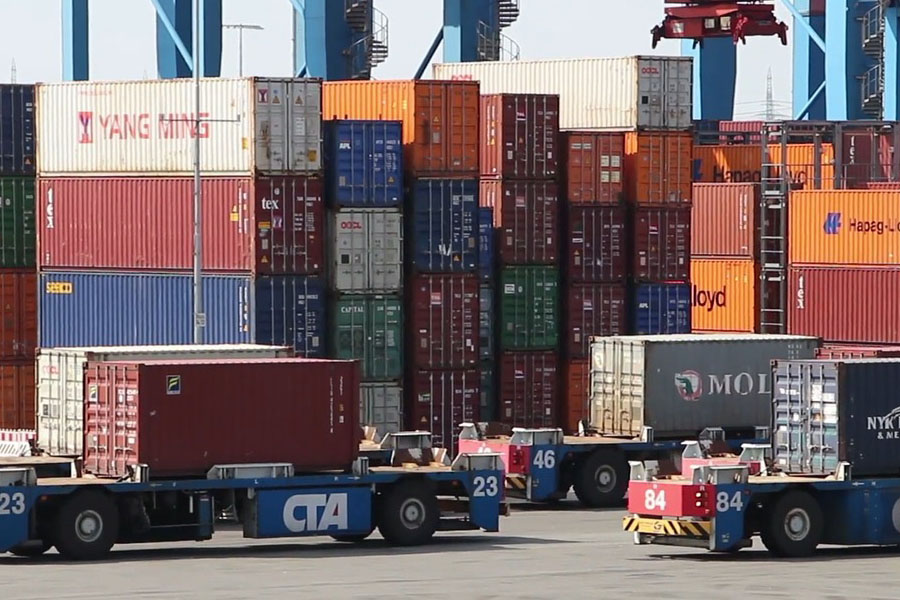- Shanghai Zhongshen International Trade Co., Ltd. - Two decades of trade agency expertise.
- Service Hotline: 139 1787 2118

Introduction
Under the grand landscape of global trade, importing refrigeration equipment from Japan has become a business choice for many enterprises. Whether it's Japan's advanced refrigeration technology or its diverse range of refrigeration products, they attract buyers from all over the world. However, the import process is not without challenges, involving documentation handling, logistics arrangements,FX Settlement AgencyThe process involves various aspects such as methods and product certification. Next, we will provide you with a detailed analysis of the key points related to importing refrigeration equipment from Japan.
ZhongShen International TradeProfessional Capabilities: Documentation Processing and Logistics Arrangements
Documentation Processing
When importing refrigeration equipment, the accuracy and completeness of documents are crucial. ZhongShen International Trade has extensive experience in document processing. First is the commercial invoice, which records key information such as the description, quantity, and value of the refrigeration equipment in detail, serving as an important basis for customs taxation. We assist clients in ensuring the invoice content is clear, accurate, and complies with international trade standards.
The bill of lading is also one of the indispensable documents. For refrigeration equipment imported from Japan, whether it is...Maritime Transportationa bill of lading orAir TransportationWe are proficient in handling bills of lading. As a document of title for goods, we pay close attention to all terms and conditions on the bill of lading to ensure our clients maintain control over their cargo. Meanwhile, the packing list should not be overlooked either—it meticulously records the specifics of each refrigeration unit within every package, facilitating customs inspection and the consignee's verification of goods.
In addition,It is recommended to verify through the following methods:The certificate of origin is crucial for enjoying preferential tariff treatment. If Japan's refrigeration equipment complies with the relevant rules of origin, we will assist customers in obtaining a valid certificate of origin, thereby reducing import costs. When handling these documents, we strictly adhere to the requirements of customs authorities in various countries to ensure consistency among the documents and avoid cargo detention or delays due to documentation issues.
Logistics Arrangement
The logistics process directly affects whether refrigeration equipment can arrive at the destination on time and safely. For imports from Japan, common transportation methods include sea freight and air freight. If the shipment volume is large and the time requirement is not particularly urgent, sea freight is a more economical choice. We maintain good cooperative relationships with many well-known shipping companies, enabling us to secure more favorable freight rates and suitable shipping schedules for our customers.
During the shipping process, we pay close attention to the packing methods of the cargo. For precision products such as refrigeration equipment, appropriate packaging and securing measures are adopted to prevent damage caused by bumps during transit. Meanwhile, we also track the transportation status of the goods and provide timely feedback to customers. If the customer has higher time requirements, air freight is a better choice. We are familiar with the routes and capacities of major airlines and can quickly arrange air freight matters to ensure the rapid delivery of refrigeration equipment.
In addition to international transportation, we also provide one-stop solutions for domestic distribution services. Whether it's transporting goods to warehouses or delivering directly to customer-specified locations, we can efficiently complete the task, ensuring the smooth operation of the entire logistics chain.
Characteristics and Strategies for Different Markets
I. Pre - export Preparation
As an important trade market, Russia has a significant demand for refrigeration equipment. When conducting trade with Russia, the method of foreign exchange settlement is a key factor. ZhongShen International Trade possesses unique advantages for the Russian market—convenient VTB foreign exchange settlement.
VTB Bank is a key financial institution in Russia. In the process of foreign exchange settlement for trade with Russia, utilizing the VTB channel allows us to streamline procedures and enhance settlement efficiency. Generally, the foreign exchange settlement process is as follows: Once the goods arrive in Russia and customs clearance is completed, the Russian buyer will transfer the payment to the designated account at VTB Bank. We assist clients in preparing the necessary settlement documents, such as commercial invoices and copies of bills of lading, which are then submitted to VTB Bank for review. Upon approval, VTB Bank converts the foreign currency into RMB at the prevailing exchange rate and transfers the funds to the client's domestic account.
This method of foreign exchange settlement is not only fast but also relatively safe and reliable. In the current complex international financial environment, through close cooperation with VTB Bank, we have provided our clients with a stable foreign exchange settlement channel, reducing the risks associated with exchange rate fluctuations and fund security.
Southeast Asian Market
Import Process
To import refrigeration equipment from Japan to the Southeast Asian market, the first step is to book cargo space. Based on the quantity and volume of the goods, select the appropriate mode of transport and shipping space. Before the goods are loaded onto the ship or aircraft, customs clearance procedures must be completed. When declaring customs, accurately fill out the customs declaration form and provide detailed information about the goods, including the brand, model, purpose, and value of the refrigeration equipment. Additionally, commercial invoices, packing lists, bills of lading, and other documents must be submitted.
Customs regulations for imported goods vary across Southeast Asian countries. For instance, some nations may impose strict energy efficiency standards for refrigeration equipment, requiring relevant test reports. We proactively research the legal and policy requirements of each country to assist clients in preparing the necessary documentation, ensuring smooth customs clearance.
After the goods arrive at the Southeast Asian port, they will undergo inspection. Customs may conduct random checks on some of the goods to verify whether they match the declared information and comply with relevant standards. If the inspection is passed, the goods will be released. Subsequently, the process moves to the cargo pickup and delivery stage, where we will arrange for the goods to be transported to the location specified by the customer.
Solutions
To address the characteristics of the Southeast Asian market, we offer the following solutions. In terms of document processing, due to varying regulations across countries, we will customize the preparation of documents according to the specific requirements of each nation. For countries requiring special certifications, we will assist clients in understanding the certification process and provide necessary guidance.
In terms of logistics, considering the geographical characteristics and transportation conditions of the Southeast Asia region, we will rationally plan transportation routes. For some island nations, it may be necessary to adopt methods such as land-sea combined transport to ensure accurate delivery of goods. At the same time, we will establish a localized logistics service network to improve the efficiency of goods distribution.
Challenges and Opportunities in the Current International Trade Landscape
Challenges
The current international trade situation is complex and volatile, and importing refrigeration equipment from Japan faces numerous challenges. Firstly, the rise of trade protectionism means some countries may increase import tariffs or impose non-tariff barriers. For instance, certain nations might enforce stringent technical standards and environmental requirements for refrigeration equipment, thereby increasing the difficulty of imports.
Exchange rate fluctuations also pose a significant challenge. Frequent volatility between the yen, renminbi, and other related currencies can impact import costs and profits. Unfavorable exchange rates may lead to a substantial increase in costs for importing companies.
Furthermore, the ongoing impact of the global pandemic has introduced uncertainties to international trade. Issues such as port congestion and logistics delays occur from time to time, posing challenges to the timely delivery of refrigeration equipment.
Opportunities
Despite the challenges, there are also many opportunities. With the gradual recovery of the global economy, the demand for refrigeration equipment is increasing. Particularly in emerging markets such as Southeast Asia, infrastructure construction and consumption upgrades are driving the growth in demand for refrigeration equipment.
At the same time, continuous advancements in technology have also brought convenience to import operations. The development of digital trade has made document processing more efficient and logistics tracking more precise. For instance, technologies such as electronic bills of lading have accelerated the speed of foreign exchange settlement and cargo delivery.
Product certification services
When importing refrigeration equipment from Japan, product certification is an essential step. Different countries and regions have varying certification requirements for refrigeration equipment. For instance, in the European Union market, obtaining CE certification is necessary to demonstrate that the product complies with the EU's safety, health, and environmental protection standards.
Although ZhongShen International Trade does not directly provide certification services, we will assist clients in understanding the specific requirements for the necessary certifications. We will provide information about relevant certification agencies and help clients prepare the required documentation for certification. Throughout the certification process, we will offer necessary guidance to ensure the smooth progress of the certification work.
For some common certifications, we will also summarize our experience and key considerations to share with clients. For example, when applying for certification, it is essential to ensure that all product indicators comply with the standards and to prepare documents such as product manuals and test reports in advance, which can improve the success rate of certification.
Conclusion
Importing refrigeration equipment from Japan involves multiple steps and requires professional knowledge and extensive experience. With its expertise in document processing and logistics arrangements, as well as unique advantages tailored to different markets, ZhongShen International Trade can provide customers with comprehensiveImport RepresentationServices. Although the current international trade situation presents challenges, it also harbors opportunities. At the same time, we will fully assist clients in product certification to ensure the smooth operation of import business.
Related Recommendations
? 2025. All Rights Reserved. Shanghai ICP No. 2023007705-2  PSB Record: Shanghai No.31011502009912
PSB Record: Shanghai No.31011502009912










